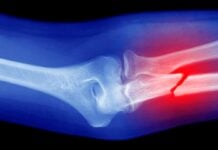A familiar image of pollution might conjure smoke stacks, car exhaust, or beachside sewage outflows. But a growing number of scientists are sounding the alarm about a new form of pollution accumulating in the mesosphere—a layer of the atmosphere far above where any airplane flies. The increasing number of satellites, many destined to burn up in the atmosphere, release clouds of metals, soot, and reactive chemicals that could damage our ozone layer and alter Earth’s climate.
The Rise of Satellites and the Problem of De-Orbiting
Currently, over 15,000 satellites orbit our planet, and nearly all are ultimately de-orbited – essentially burned up in the atmosphere. This trend is driven by several factors: miniaturized satellite designs, plummeting launch costs thanks to reusable rockets, and the growth of satellite constellations like Starlink. Starlink, operated by SpaceX, consists of approximately 8,000 satellites providing broadband internet, located in low Earth orbit around 550 kilometers above the surface. Amazon’s Project Kuiper and China’s Guowang initiative are also planned, with potential to add tens of thousands more satellites in the coming years.
Satellites typically have a lifespan of only about five years, due to limited fuel and a desire to upgrade to newer technology. To prevent collisions in space, operators direct satellites into the atmosphere to burn up – a process that releases substantial quantities of material. While only a few satellites burn up each day, the sheer volume of launches means an estimated 900 tonnes of space debris vaporizes annually – roughly 5% of the mass naturally injected by meteoroids.
Why Satellite Pollution is Concerning
While this amount might seem relatively small, scientists are increasingly worried about the composition of the human-made materials left behind. Specifically, the presence of aluminum is a significant concern:
- Ozone Depletion: Aluminum constitutes up to 40% of a typical satellite. When burned, it’s converted to alumina (aluminum oxide), which has been shown to react with and deplete the ozone layer, which protects us from harmful ultraviolet radiation. Previous rocket launches created temporary ozone holes, and similar effects could be widespread with increased satellite de-orbiting.
- Black Carbon (Soot): Satellite burn-up also produces soot, which absorbs sunlight, causing warming in the atmosphere. While terrestrial sources produce far more soot overall, the altitude at which it is released is crucial. Particles released in the mesosphere (50-80 kilometers) can linger for years, gradually filtering down to the stratosphere where the ozone layer resides.
- Long Lifetimes & Increased Growth: Recent data reveals that satellite-related pollution is growing more than three times faster than previously thought.
Recent Research Highlights Potential Impacts
Researchers are actively modelling the large-scale effects of this pollution:
- Atmospheric Warming: A recent study simulated the impact of over 60,000 short-lifetime satellites, predicting a 1.5°C warming of the mesosphere and a 10% reduction in the speed of high-level winds in the Southern Hemisphere’s polar vortex.
- Soot’s Powerful Warming Effect: A 2022 study estimates that soot released at high altitudes from common rocket fuels can be up to 500 times more warming than that emitted by cars or passenger planes.
Understanding the Fragmentation Process
To better understand and mitigate the issue, scientists are studying how satellites break down during re-entry:
- Plasma Wind Tunnel Experiments: Stefan Löhle and his team at the University of Stuttgart in Germany use a plasma wind tunnel to simulate satellite re-entry conditions. By recreating the fiery process and analyzing the resulting light spectra, they can determine the precise nature of the particles released – whether they are solid, liquid, or gaseous and what their shape and size are.
- Need for Accurate Data: This research is crucial for informing climate models and ensuring predictions are based on the accurate characterization of the pollutants generated.
Potential Solutions and Future Directions
Several avenues are being explored to address the growing problem of satellite pollution:
- Optimized Re-entry Trajectories: By manipulating a satellite’s re-entry trajectory, scientists may be able to alter the air resistance it experiences, potentially reducing the amount and composition of material released.
- Atmosphere-Breathing Propulsion: New satellite designs powered by atmosphere-breathing electric propulsion could significantly reduce the need for de-orbiting, as they would remain aloft for extended periods using gases from the air.
- Circular Economy in Space: The concept of a circular economy in space envisions satellites being serviced, upgraded, refueled, and even recycled in orbit, minimizing waste and extending their lifespan. The European Space Agency is already exploring this, demonstrating potential through its RISE mission designed to dock with and control a geostationary satellite.
- Need for Immediate Action: Scientists emphasize that the time to address this issue is now. “It’s all a bit like, ‘let’s think about this later’,” says Stefan Löhle. “But later is now.”
Satellite pollution represents a novel and growing threat to our planet’s atmosphere. While not yet a serious crisis, the sheer volume of launches and the unique composition of the materials involved demand urgent attention and innovative solutions to prevent long-term environmental consequences





























